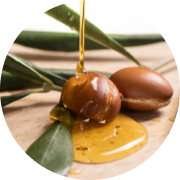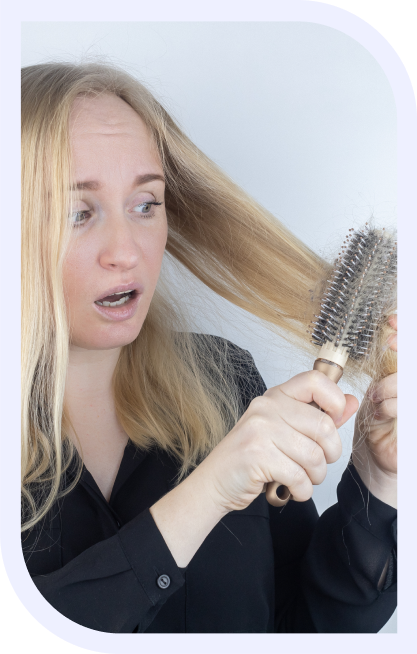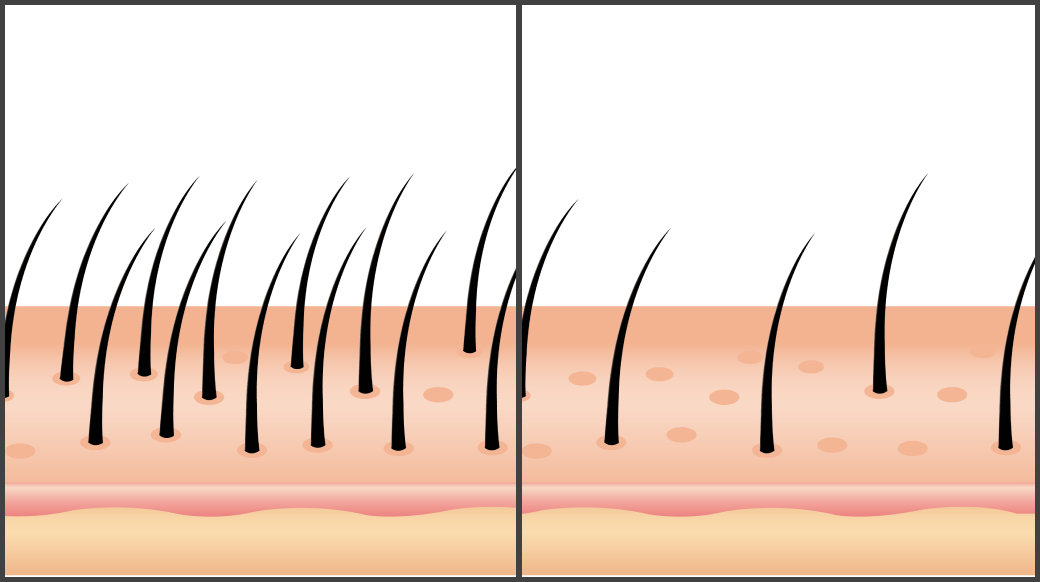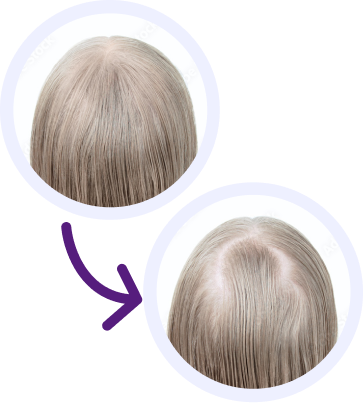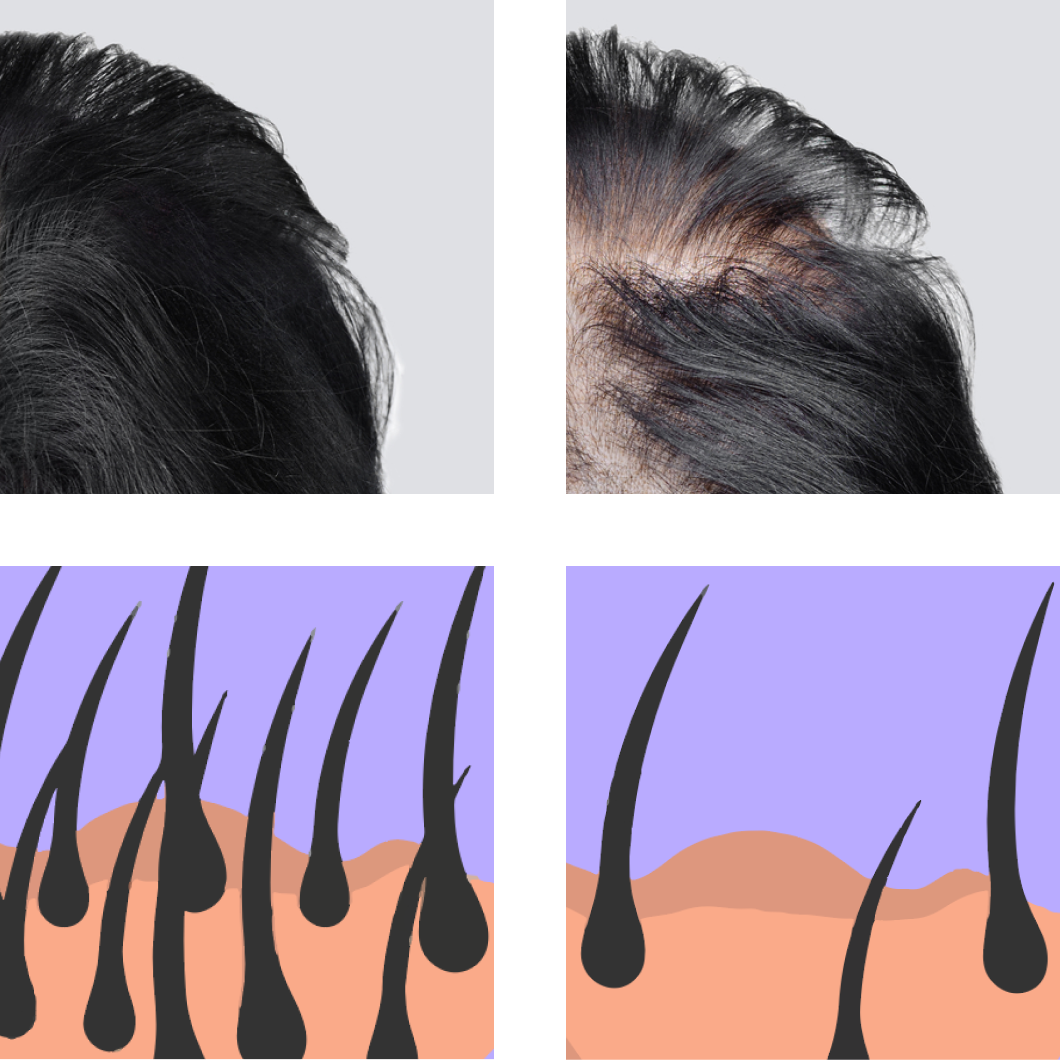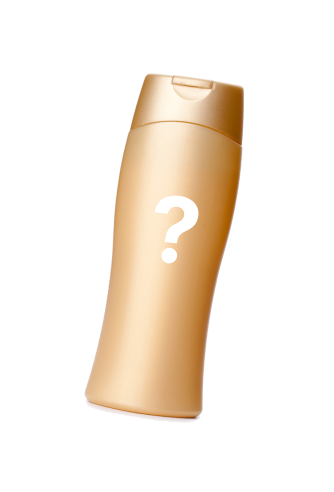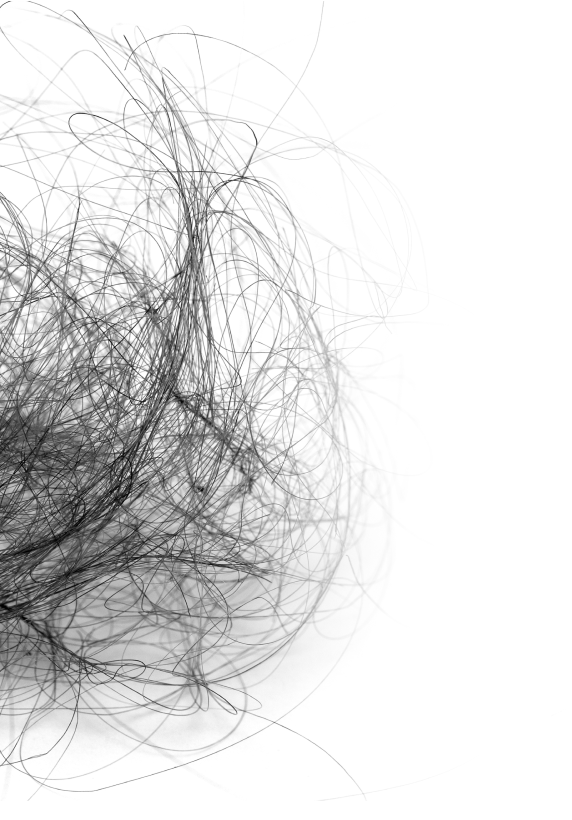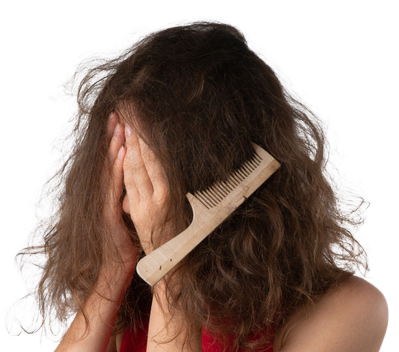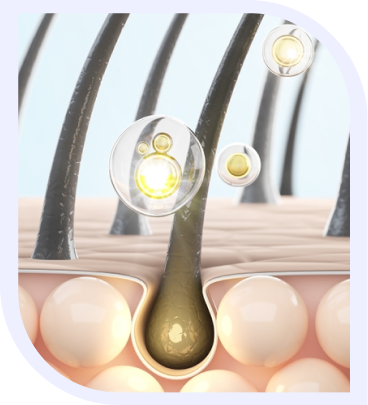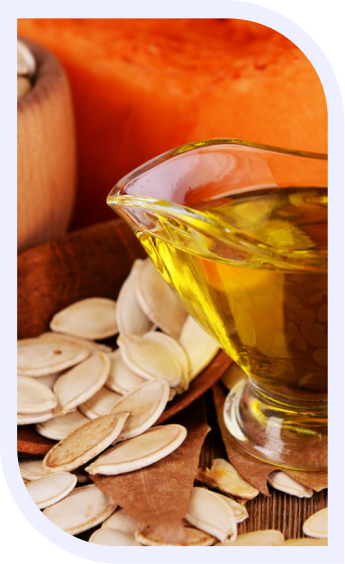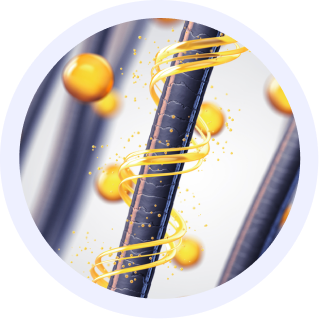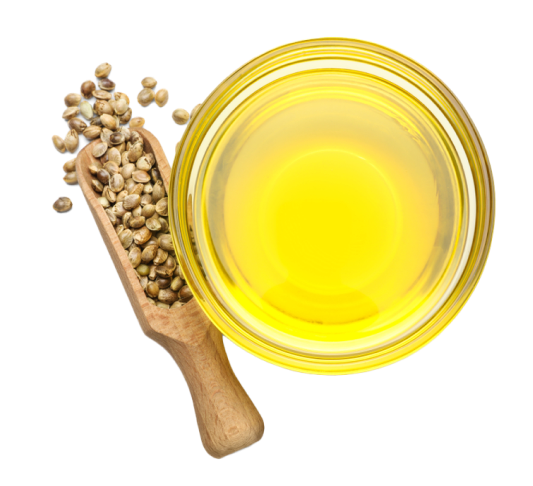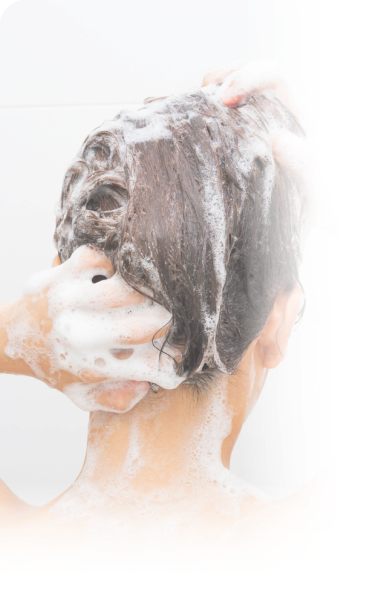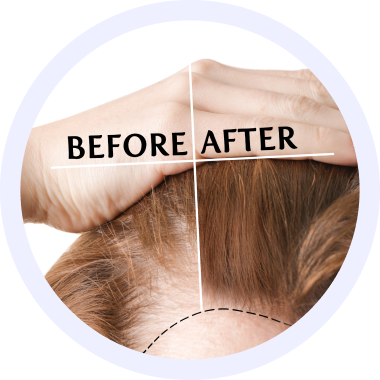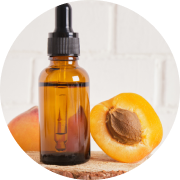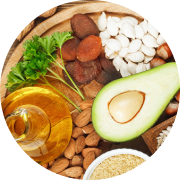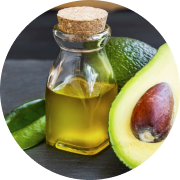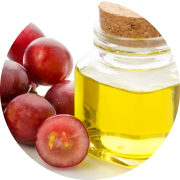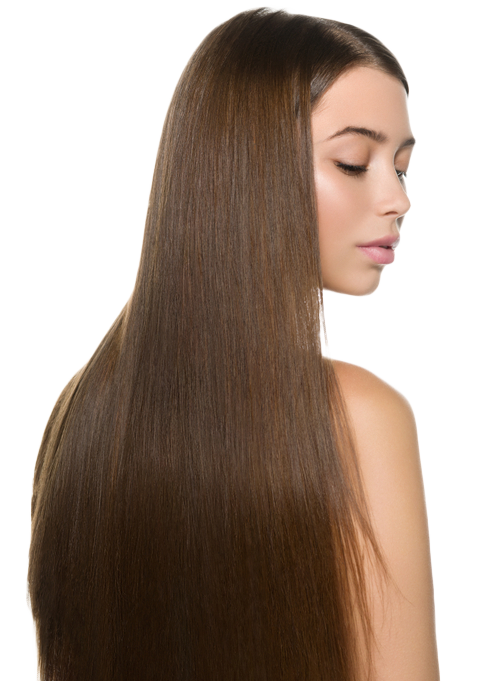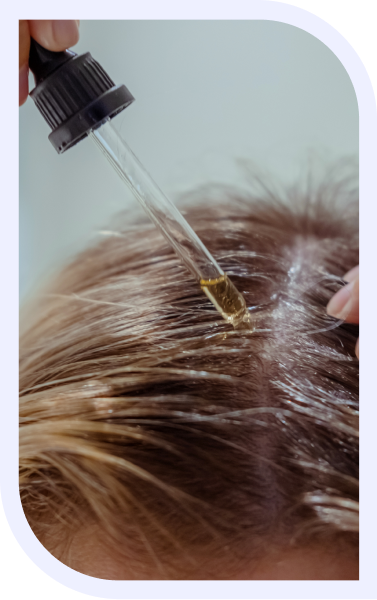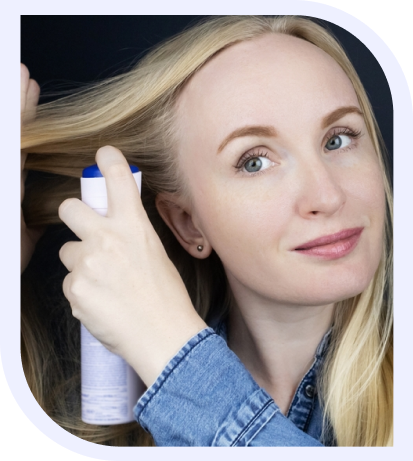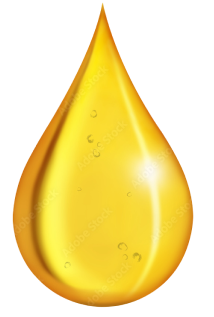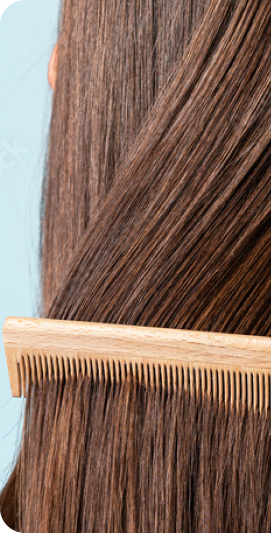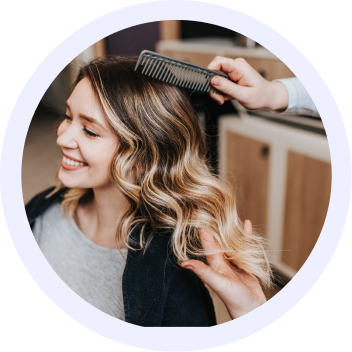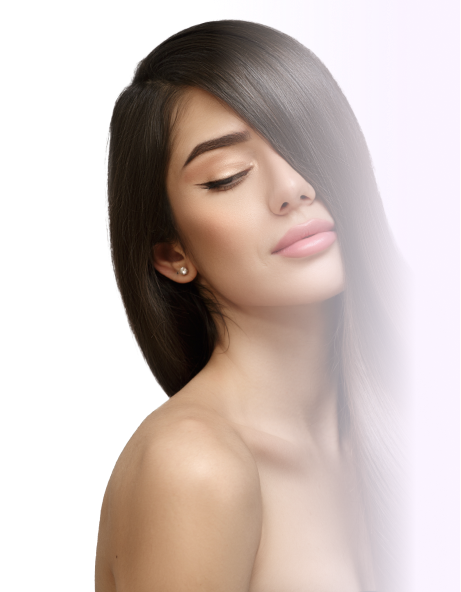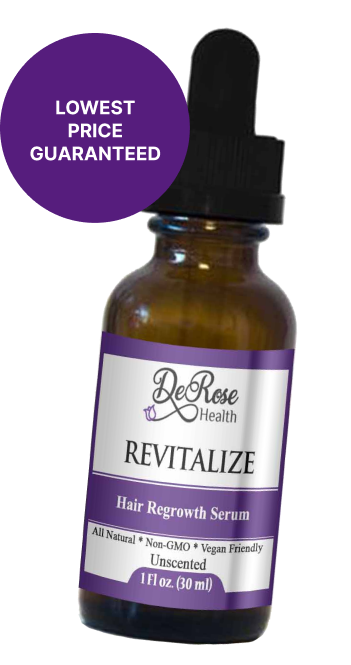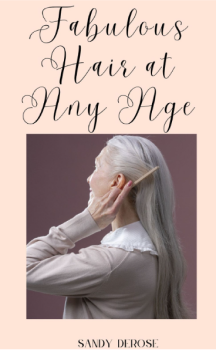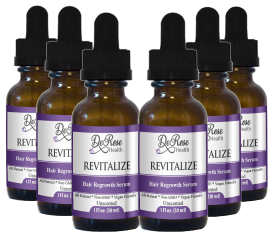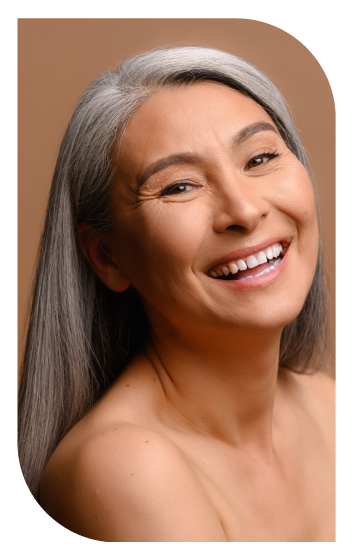Almohanna, H.M., Ahmed, A.A., Tsatalis, J.P., & Tosti, A. (2022). Female Pattern Hair Loss: An Update. The National Library of Medicine, 100(8), 92469.
Le Floc'h, C., Groux-Degroote, S., Allard, C., Péan, N., & Delbé, C. (2022). Anti-Hair Loss Effects of A Fruit Extract Rich in Ellagitannins and Ellagic Acid. International Journal of Molecular Sciences, 10(4), 106.
Soleymani, T., Arab-Nozari, M., Rashidi, M.R., & Aghaei, S. (2023). Hair loss treatment: A mechanistic review on pharmaceutical therapies. Procedia Computer Science, 205, 533-547.
Sehgal, V.N., Srivastava, G., Sardana, K., Bhattacharya, S.N., & Mudgil, A.V. (2019). Female pattern hair loss revisited: Diagnosis and treatment. The National Library of Medicine, 6(1).
Hair Loss in Women. (2022). My.ClevelandClinic. https://my.clevelandclinic.org/health/diseases/16921-hair-loss-in-women
Trüeb, R.M., Dias, M.F.R.G. (2015). Female Pattern Hair Loss. The National Library of Medicine, 45(4).
(2019). Treating female pattern hair loss. Harvard Health. https://www.health.harvard.edu/staying-healthy/treating-female-pattern-hair-loss
(2022). Women's Hair Loss Causes. WebMD. https://www.webmd.com/skin-problems-and-treatments/hair-loss/women-hair-loss-causes
Ludwig, E. (2003). Classification of the Types of Androgenetic Alopecia (Common Baldness) Occurring in the Female Sex. American Academy of Family Physicians, 67(5), 1007.
Lim, E.,& Dinh, J. (2019). Thyroid Diseases and Female Pattern Hair Loss. The Journal of Clinical Endocrinology & Metabolism, 104(7), 2875–2878.
Trüeb R. M. (2019). Oral spironolactone combined with topical minoxidil is an efficacious therapy for female androgenetic alopecia and telogen effluvium. Dermato-endocrinology, 11(1), e1557954.
Syed, K. (2022). Treatment helps women with hair loss condition caused by menopause, study finds. NBC News. https://www.nbcnews.com/health/health-news/female-hair-loss-menopause-treatment-study-rcna16389
Uzunçakmak, T. K., & Özçelik, B. (2021). An Update on COVID‐19‐associated Skin Manifestations. Clinics in dermatology, 39(6), 879–890.
Mansour, A., Mehta, J., Leheta, T., Noser, E., Silva, K. A., Hamzavi, I., & Bergfeld, W. (2021). The Effect of COVID-19 on Hair: A Review. JAMA dermatology, 157(12), 1417–1422.
Aldredge, L., Bergfeld, W., Bews, H., Blumeyer, A., Brooks, P., DeBakey, S., ... & Shapiro, J. (2017). Diagnosis and Treatment of Androgenetic Alopecia: An Official Position Statement of the Society for Investigative Dermatology. Journal of Investigative Dermatology, 6(1), 371-376.
Voullaire, L., Sladden, M. J., & Sinclair, R. D. (2021). Telogen effluvium: A review of the literature. Australasian journal of dermatology, 62(3), e167–e174.
Godoy, A., Kawakami, Y., Li, Y., & Rashid, R. M. (2016). A review of the diagnosis, pathogenesis, and treatment strategies for Androgenetic Alopecia. The Journal of dermatological treatment, 27(5), 374–383.
Leung, A. (2021). How chronic stress leads to hair loss. Harvard Gazette. https://news.harvard.edu/gazette/story/2021/03/researchers-discover-how-chronic-stress-leads-to-hair-loss/
Female Pattern Baldness. (n.d.). Mount Sinai Health Library. https://www.mountsinai.org/health-library/diseases-conditions/female-pattern-baldness
Oh, J. W., Kwon, O., Pyo, H. K., Ahn, K. J., Minaei, A., Choi, S. Y., ... & Kwon, T. R. (2014). 5α-reductase Inhibiting Steroidal Saponins from Tribulus terrestris. Biological and Pharmaceutical Bulletin, 37(5), 846-850.
Alzolibani, A. A., Al Robaee, A. A., Al Shobaili, H. A., Settin, A. A., & Bin Saif, G. A. (2021). Pathogenesis of Androgenetic Alopecia: Beyond Testosterone and Dihydrotestosterone. Clinical, cosmetic and investigational dermatology, 14, 977–991.
Piraccini, B. M., Nobile, V., & Starace, M. (2022). Telogen Effluvium: A Contemporary View on Evolving Concepts. Journal of Clinical and Aesthetic Dermatology, 15(8), e489–e497.
Akdag Lisaniler, F. G., Allegue Galludo, F., Diez Ontañon, I. G., Tunali Turkmen, S., Akbay, C., & Yay, A. (2022). Platelet-Rich Plasma for Androgenetic Alopecia Treatment: A Metanalysis. The Journal of craniofacial surgery, 33(6), 1980–1986.
Vary, J. C., Jr, Seyed Jafari, S. M., & Ostovar, A. (2022). Microneedling for hair loss: A review. Dermatologic therapy, 35(4), e15501.
Singh, S., & Singh, U. (2014). Hair Restoration Effects Of Phyllanthus Emblica Linn- A Systematic Review. Electronic Journal of Integrative Medicine, 2(2).
Fujita, K., Kitagawa, K., & Nakamura, M. (2010). Practical application of antrodia camphorata products for hair loss treatment. Biomedicine & pharmacotherapy = Biomedecine & pharmacotherapie, 64(3), 194–197.
Talpur NA, Echard BW, Yasmin T, Bagchi D. Effects of a novel formulation of essential oils on glucose-insulin metabolism in diabetic and hypertensive rats: a pilot study. Diabetes Obes Metab. 2005;7(2):193-9. doi: 10.1111/j.1463-1326.2004.00368.x. PMID: 15675221.
Bai, T., Qu, X., Chen, S., Cai, B., Zhou, X., & Tang, Y. (2005). Preliminary research on chemical constituents from Cuscuta chinensis. Journal of applied genetics, 46(4), 341-344.
Saber, M. M. (2023). The therapeutic potential of moringa oleifera against hair loss: A review. Indian Journal of Pharmaceutical Sciences, 1-15.
Murugusundram, S. (2005). Serenoa repens extract in androgenetic alopecia: A review. Phytotherapy Research: An International Journal Devoted to Pharmacological and Toxicological Evaluation of Natural Product Derivatives, 19(1), 96-99.
Öztürk, P., Kurşun, M., & Hekimgil, M. (2013). Green tea against hair loss. Gulhane Medical Journal, 57(4), 233-236.
Shirohiwala, R. (2022). Alopecia Therapy: A Systemic Review on Herbal Oils Used for the Treatment of Hair Loss. Preprints.
Tamboli, F. A., Tamboli, F. K., & Tamboli, A. F. (2021). Medicinal Plants Used in Cosmetics for Skin and Hair Care. Preprints.
Nobile, V., Michelotti, A., Cestone, E., & Baldari, C. (2017). Efficacy of a Food Supplement Based on Pumpkin (Cucurbita pepo) Seed Oil on Hair Loss/Hair Health in Men. Biomedical Journal of Scientific & Technical Research, 1(2).
Hay, I. C., Jamieson, M., & Ormerod, A. D. (1998). Randomized Trial of Aromatherapy: Successful Treatment for Alopecia Areata. Archives of Dermatology, 134(11), 1349-1352.
Lee, B. H., Lee, J. S., & Kim, Y. C. (2011). Hair Growth-Promoting Effects of Lavender Oil in C57BL/6 Mice. Toxicological Research, 27(2), 103–108.
Panahi, Y., Taghizadeh, M., Marzony, E. T., & Sahebkar, A. (2015). Rosemary oil vs. minoxidil 2% for the treatment of androgenetic alopecia: a randomized comparative trial. Skinmed, 13(1), 15-21.
Zhu, J. L., Zeng, Y., Xu, X. M., Wang, J. S., & Yin, Z. Q. (2018). TSG-6 released from intradermally injected mesenchymal stem cells accelerates wound healing and reduces tissue fibrosis in murine full-thickness skin wounds. International journal of molecular medicine, 41(1), 417–428.
Jeong, H. K., Shin, A. Y., Kim, B. J., Yoo, E. S., & Suh, H. (2019). Pumpkin Seed Oil Extracted From Cucurbita maxima Improves Hair Growth in Human Hair Follicle Dermal Papilla Cells. Phytotherapy Research, 33(8), 2116-2121.
Beoy, L. A., Woei, W. J., & Hay, Y. K. (2010). Effects of Tocotrienol Supplementation on Hair Growth in Human Volunteers. Tropical life sciences research, 21(2), 91–99.
Wang, J., Lu, Z., Au, J. L. S., & Ernst, E. (2016). Ginseng and hair growth: A review on traditional use, experimental evidence, hair growth mechanism, and prospects for drug development. Journal of ethnopharmacology, 190, 402–414.
Gavazzoni Dias, M. F. R. (2015). Hair Cosmetics: An Overview. International Journal of Trichology, 7(1), 2-15.
Patel, S., Sharma, V., Chauhan, N. S., Dixit, V. K., & Thakur, M. (2015). Evaluation of hair growth promoting activity of Phyllanthus niruri. Avicenna journal of phytomedicine, 5(6), 512–519.
Shin, H., Ryu, H. H., Yoon, S. S., Jo, S. J., & Song, W. S. (2017). Role of oxidative stress in androgenetic alopecia. Clinical, cosmetic and investigational dermatology, 10, 269–275.
Jo, S. J., Shin, H., Choi, H., Eun, H. C., Kim, K. H., & Kwon, O. (2017). Topical Spironolactone Inhibits Dihydrotestosterone and Induces Anti-Inflammatory TGF-β Signaling in Human Sebaceous Glands. Journal of investigative dermatology, 138(4), 779-787.
Lee, W. S., & Ro, B. I. (2018). Hair Restoration Surgery: The State of the Art. Journal of Craniofacial Surgery, 29(4), 943-947.
Trüeb, R. M. (2017). The Difficult Hair Loss Patient: Guide to Successful Management of Alopecia and Related Conditions (Vol. 6). Springer International Publishing.
Goren, A., Castaño, J. A., McCoy, J., Bermudez, F., & Lotti, T. (2015). Novel enzymatic assay predicts minoxidil response in the treatment of androgenetic alopecia. Dermatologic Therapy, 28(3), 171-173.
Goldberg, L. H., (2022). Platelet-rich plasma (PRP) treatment for hair loss. Medical News Today. https://www.medicalnewstoday.com/articles/68082
Cheng, A., Cohen, J. L., Kahn, A. M., Cohen, J. L., Kahn, A. M., Cohen, J. L., Kahn, A. M. (2022). Platelet Rich Plasma, Hair Restoration. Aesthetic plastic surgery, 76(4), 78–84.
Goldberg, L. H., (2022). Platelet-rich plasma (PRP) treatment for hair loss. Medical News Today. https://www.medicalnewstoday.com/articles/68082
Park, H. Y., Kosmadaki, M., Yaar, M., & Gilchrest, B. A. (2009). Cellular mechanisms regulating human melanogenesis. Cellular and Molecular Life Sciences, 66(9), 1493-1506.
Dihydrotestosterone (DHT) Test: High vs Low vs Normal Levels. (2019). My.Cleveland Clinic. https://my.clevelandclinic.org/health/articles/24555-dht-dihydrotestosterone.
DHT PGD2 hair follicle miniaturization studies - Google Search. (n.d.). Google. Retrieved February 18, 2023, from https://www.google.com/search?q=DHT%20PGD2%20hair%20follicle%20miniaturization%20studies
Garza, L. A., Liu, Y., Yang, Z., Alagesan, B., Lawson, J. A., Norberg, S. M., ... & Cotsarelis, G. (2012). Prostaglandin D2 inhibits hair growth and is elevated in bald scalp of men with androgenetic alopecia. Science translational medicine, 4(126), 126ra34.
Rishiraj, B., Epstein, J., & Butmarc, J. (2018). The Role of Prostaglandin D2 and Its Receptors DP1 and 2 in Hair Follicle Biology and Disease. Journal of Drugs in Dermatology, 17(8), 907-912.
Rishiraj, B., Epstein, J., & Butmarc, J. (2018). The Role of Prostaglandin D2 and Its Receptors DP1 and 2 in Hair Follicle Biology and Disease. Journal of Drugs in Dermatology, 17(8), 907-912.
Azzouni, F., Godoy, A., Li, Y., & Mohler, J. (2012). The 5 Alpha-Reductase Isozyme Family: A Review of Basic Biology and Their Role in Human Diseases. Advances in Urology, 2012, 1-18.
Kaufman, K. D., Dawber, R. P., & Shapiro, J. (1998). The pathogenesis of androgenetic alopecia. Journal of Investigative Dermatology Symposium Proceedings, 3(1), 24-28.
Choi, G. S., Shin, S. H., Kim, Y. K., Lee, S. H., Park, G. S., Lee, H. G., & Eun, H. C. (2007). The Influence of Psychological Stress on the Hair Growth Cycle in Mice. Journal of Investigative Dermatology, 127(9), 2162-2167.
Orentreich, N., Durr, N. P., & Orentreich, D. S. (2018). Scalp Reduction for Male Pattern Baldness. Dermatologic Surgery, 44(3), 397-399.
(2018). How do hair follicles grow? Yale-led study untangles the science. YaleNews. https://news.yale.edu/2018/12/27/how-do-hair-follicles-grow-yale-led-study-untangles-science.
Menopause. (n.d.). Yale Medicine. https://www.yalemedicine.org/conditions/menopause
Vary, J. C., Jr, Seyed Jafari, S. M., & Ostovar, A. (2022). Microneedling for hair loss: A review. Dermatologic therapy, 35(4), e15501.
Xintaropoulou, C., Ward, N.J., Cross, A.J., Onoufriadis, A., Bakal, C., & Bertolini, M. (2022). Mechanisms and Therapies in Androgenetic Alopecia and Female Pattern Hair Loss. BioResearch Open Access, 1499.
Medicine, Y. S. o. (2022). One Step Closer to Creating New Hair Follicles. Yale Medicine News. https://news.yale.edu/2022/04/13/one-step-closer-creating-new-hair-follicles
Soleymani, T., Arab-Nozari, M., Rashidi, M.R., Aghaei, S., Arab-Nozari, M., Rashidi, M.R., Aghaei, S. (2021). A review on clinical applications of platelet-rich plasma for hair loss treatment. Computers in Biology and Medicine, 4(133), 104488.
Lee, S. W., Juhasz, M., & Mesinkovska, N. A. (2019). Alopecia areata is driven by cytotoxic T lymphocytes and is reversed by JAK inhibition. Drugs, 79(5), 533-550.
Miranda, B. H., Charlesworth, M. R., Tobin, D. J., & Sharpe, D. T. (2020). The role of androgens and the androgen receptor in cycling human scalp hair follicles. The Journal of Endocrinology, 244(3), R145-R155.
Xing, L., Dai, Z., Jabbari, A., Cerise, J. E., Higgins, C. A., Gong, W., de Jong, A., & Christiano, A. M. (2014). Alopecia areata is driven by cytotoxic T lymphocytes and is reversed by JAK inhibition. Nature medicine, 20(9), 1043.
Chen, X., Zhou, J., Li, X., & Li, J. (2020). Estrogen Enhances the Cell Viability and Motility of Breast Cancer Cells through the ERα-δNp63-Integrin β4 Signaling Pathway. The Journal of Endocrinology, 244(3), R145-R155.
Chu, W. L., Zhang, J., Ro, H. M., Choi, D. K., Kim, J. E., & Kim, J. W. (2019). Dihydrotestosterone (DHT) Induces Negative Regulation of Intrinsic Apoptotic Pathway in Human Dermal Papilla Cells. Journal of Investigative Dermatology, 139(7), 1456-1467.
Inui, S., Kajita, A. Y., Nakamura, Y., Itami, S., Katayama, I. (2017). Androgen Induces Apoptosis in Hair Follicle Dermal Papilla Cells: A Possible Explanation for Androgenetic Alopecia. Journal of Dermatological Science, 85(2), 94-104.
Ucuzian, A. A., Jain, V., Tu, Y., Brey, E., Eastham, A., Plikus, M., Shea, C., ... (2018). Androgens and Alopecia. Molecular Biology of the Cell, 29(10), 1183–1192.
Randall, V. A., Thornton, M. J., Messenger, A. G. (2000). The role of androgens in follicular unit senescence and hair loss: DHT and senescence of the human hair follicle. Journal of the European Academy of Dermatology and Venereology, 14(6), 408–415.
Hibberts, N.A., Howell, A.E., & Randall, V.A., Balen, A.H., (1998). The Effects of Testosterone and Dihydrotestosterone on Hair Follicles: Evidence for Selective Modulation of Follicular Cycling and Hair Follicle Size. Journal of Investigative Dermatology Symposium Proceedings, 3(1), 29–33.
Song, G., Ouyang, G., Bao, S. (2004). Progesterone Inhibits Growth and Induces Apoptosis in Breast Cancer Cells: Inverse Effects on Bcl-2 and p53. Journal of Biomedicine and Biotechnology, 6, 539-543.
